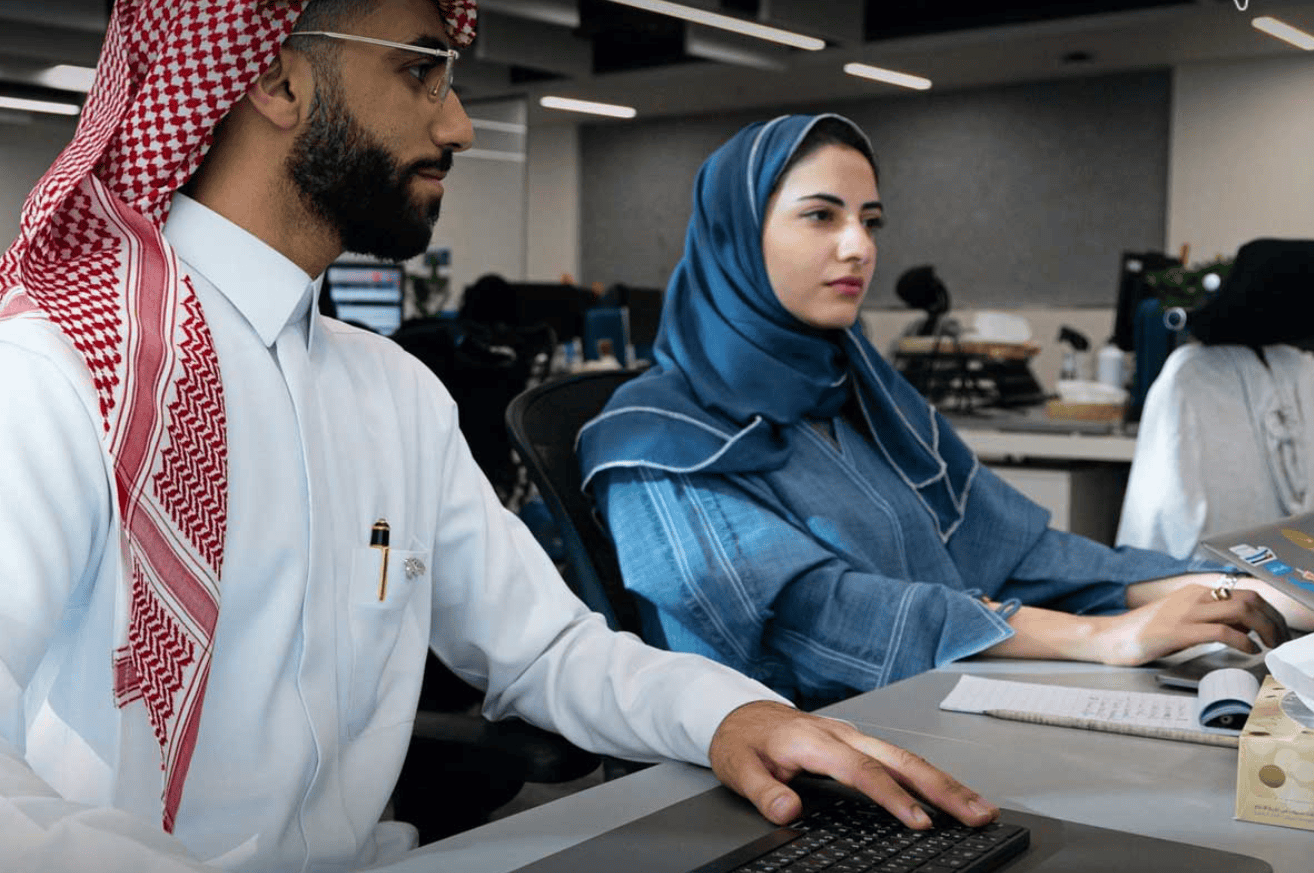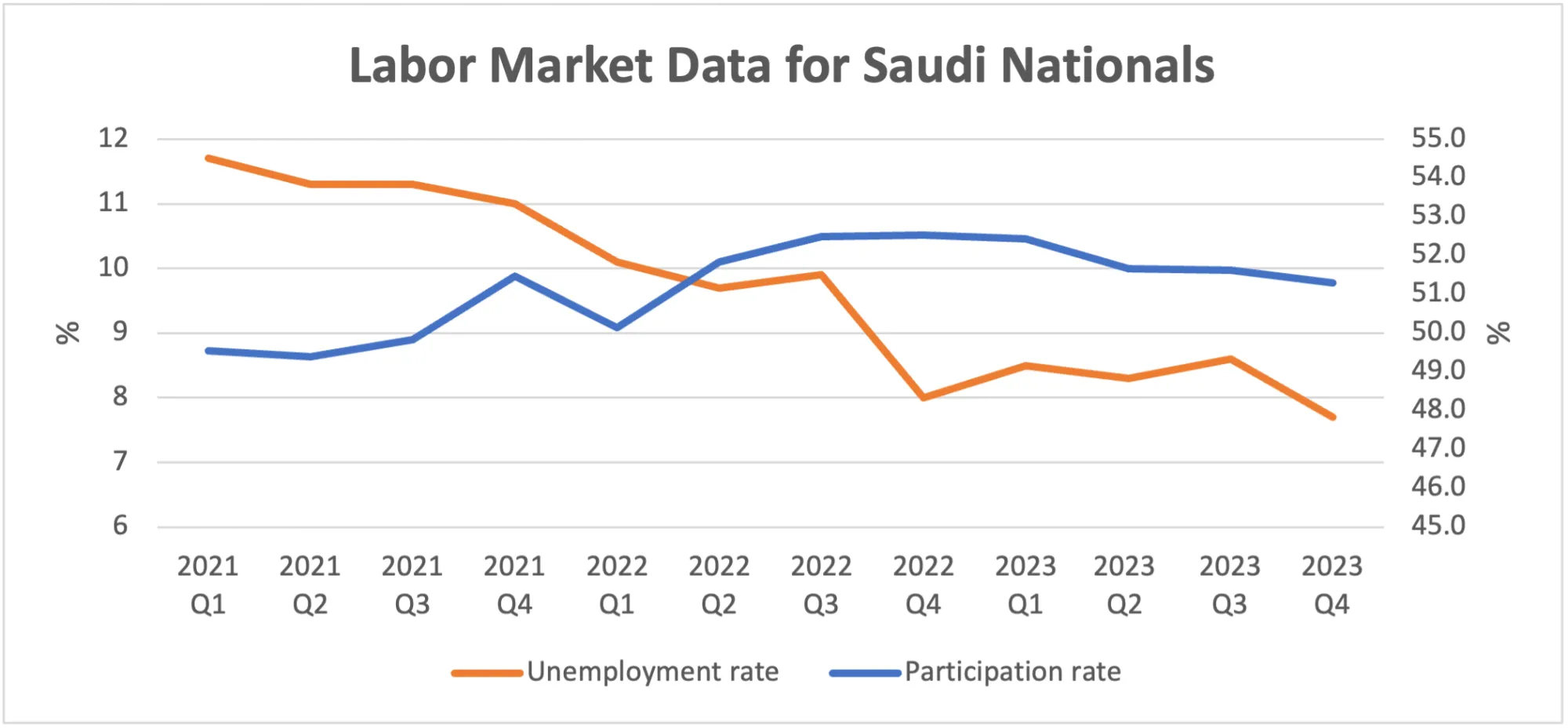Saudi Arabia’s Labor Market Transformation: Vision 2030 Targets Surpassed Ahead of Schedule
Saudi Arabia’s labor market reform under Vision 2030 is paying off early, with unemployment down to 7%, women’s participation up to 36.2%, and ambitious goals set for the decade ahead.

A New Era for Employment, Inclusion, and Workforce Development
As part of its ambitious Vision 2030 reforms, Saudi Arabia is reshaping its labor market, achieving significant milestones years ahead of schedule. These advancements underscore the Kingdom’s dedication to empowering its people, diversifying its economy, and building a sustainable, future-ready workforce.
Unemployment Rate Drops to 7% — Six Years Ahead of Target

In a standout achievement, Saudi Arabia reduced the unemployment rate among citizens to 7% by the end of 2024, hitting a key Vision 2030 target well ahead of schedule. This decline reflects the success of localization strategies, private sector growth, and targeted employment initiatives.
- Unemployment among women has also seen a major drop, improving gender balance in the labor market.
- The Jadarat Platform, a national employment system, was launched to match job seekers with public and private sector opportunities more efficiently.
- More than 1.5 million job seekers have already registered, and over 100,000 employment contracts have been facilitated through the platform.
- Nitaqat Program continues to incentivize the hiring of Saudi nationals across all business sizes.
- Job creation in non-oil sectors, such as tourism, finance, and entertainment, is accelerating due to regulatory reforms and investment incentives.
"We are building a labor market that serves the citizen and powers the economy." — Ministry of Human Resources and Social Development
Women at the Forefront: Participation Reaches 36.2%
Saudi women are playing a growing role in the labor force, with several indicators surpassing Vision 2030 expectations:
- 36.2% workforce participation (target was 30%)
- Over 78,000 women now in senior leadership positions
- 45% of SMEs in Saudi Arabia are female-owned
- 551,000+ women registered businesses by end of 2023
- 449,000+ freelance permits granted to Saudi women
- 111,000+ women employed in tourism
- Saudi women are now taking up roles in STEM sectors, including software engineering, data science, and renewable energy.
- Public-private initiatives like "Wusool" are supporting women’s mobility to work, offering subsidized transportation solutions.
- Childcare support programs have increased, making it easier for working mothers to balance professional and family responsibilities.
These figures reflect a cultural shift toward inclusion, leadership, and economic contribution by women across sectors.
Investing in Youth: Skills and Opportunities
Young Saudis are being equipped with future-ready skills through a wide range of national programs:
- Tamheer: On-the-job internships for university graduates
- Maharat: Digital learning and soft skills training
- National academies offering certifications in AI, cybersecurity, digital marketing, and coding
- Qimam Fellowship and Misk Academy continue to prepare youth for leadership roles locally and globally
- Increase in youth female labor participation to 18%
- Introduction of the National Training Fund, which co-finances private sector training in strategic fields
- Technical and Vocational Training Corporation (TVTC) is now offering over 250 training programs aligned with Vision 2030 sectors
- Digital bootcamps and nanodegree scholarships are being expanded in partnership with global tech firms
These programs not only enhance employability but also align with the future needs of a diversified economy.
Source: Vision 2030 HCDP
Looking Ahead: Ambitious 2030 Goals
Following this early success, Saudi Arabia is setting new benchmarks:
- 5% unemployment by 2030
- 40% women’s labor participation
- Broader inclusion in emerging sectors such as tech, logistics, healthcare, and green energy
- Expansion of freelancing licenses, aiming for over 1 million registered freelancers by 2030
- Development of remote work ecosystems supported by new infrastructure and digital platforms
- Smart city development and gig economy regulation expected to create thousands of new roles
- National Labor Observatory to monitor real-time labor data and policy impact
These targets reinforce Saudi Arabia’s position as a leader in sustainable economic transformation.
Final Thought: A Workforce Built for the Future
What we’re witnessing is more than statistical progress — it’s a national transformation. Through Vision 2030, Saudi Arabia is investing in its people, opening new opportunities, and creating a dynamic, inclusive labor market that serves as a global model.





